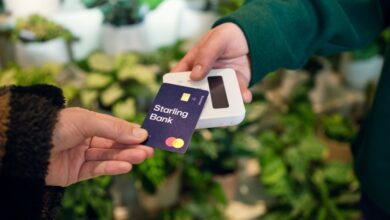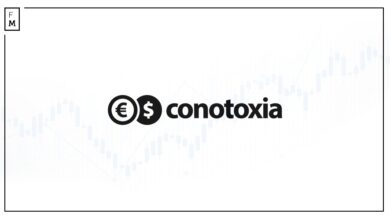Middle East Leads in Digital Payment Innovation amid Escalating Regional Hostilities

Traditionally, countries in the Middle East have been considered cash-forward economies, with the majority of residents using local fiat currencies to complete transactions and conduct trade. Although in some countries, cash is still considered to be the dominant form of payment, other advanced economic centers are changing their direction. This comes amid the ongoing tension in the region, which has escalated into Hezbollah’s pager and walkie-talkie blasts.
As the advancement of digital payments and financial technology accelerates, seeing widespread adoption among younger, more tech-savvy consumers, Middle Eastern countries with the proper resources and digital infrastructure are banking heavily on the future of the emerging payments market in the region.
Consumers have largely embraced the shift from cash to digital payments. A report by Mastercard found that around 85% of people in the Middle East and North Africa (MENA) region have used at least one emerging digital payment method during the last 12 months. Many more individuals are undertaking tappable smartphone mobile wallets, Buy-Now-Pay-Later (BNPL), and using payment-enabled wearable devices.
The diversity of the landscape has seen a series of newcomers step into the market, not only bringing to light the importance and opportunities of digital payments in the region but, more importantly, how the Middle East can become a disrupter in the market and a driving force in the fintech industry.

Source: Data Bridge Market Research
Global Opportunities in the Middle East
For many consumers, convenience and efficiency are important factors when completing payments or finalizing transactions. However, in the Middle East, research by Mastercard has found that cybersecurity is among the top factors consumers consider when selecting a payment method they’re more comfortable with.
While digital security is important, there’s more to it than meets the eye. Consumers in the region consider other factors such as ease of use, availability of rewards and promotions, and the social and environmental benefits they could receive.
Seeing as these are all important factors local consumers consider important, digital payment companies and regulators are developing key areas to help progress each country’s individual payment arena. This will enable faster and more effective payment solutions for consumers while simultaneously changing the lens through which digital payments are viewed.
Cross-border payments using open money like $USDC send value directly between digital wallets using blockchain technology, so there can be fewer fees and less friction. That’s the power of open money for businesses. #OpenMoneyErahttpss://t.co/YUo77pRJs2
— Circle (@circle) August 7, 2024
Buy-Now-Pay-Later
Buy-Now-Pay-Later has entrenched itself in the payments landscape, both globally and in the Middle East. Deloitte’s forecasting estimates predict that global BNPL Gross Merchandise Value (GMV) will increase from $433 billion in 2022 to over $960 billion by 2028.
BNPL payments are available worldwide. In the United States, around nine million consumers use BNPL, though a small percentage of the general population. The number of users has increased by 40% in the last few years.
Indonesia has the highest number of BNPL users in Asia, with close to 19 million users as of 2022. Other countries with the highest number of BNPL users include the Philippines, Vietnam, and Japan.
Estimates from the Middle East, North Africa, and Pakistan suggest that over 50% of the region’s population used BNPL payments in 2022, making it the largest and perhaps most active area in terms of buy-now-pay-later transactions.
Buy Now, Pay(Pal) Later#BNPL accounted for 5% of global e-commerce transaction volume last year and is expected to grow at a CAGR of 16%#fintech #tech #finserv #AI@psb_dc @BetaMoroney@efipm @BrettKing@spirosmargaris@jasuja@enricomolinari@shi4tech@chidambara09 pic.twitter.com/rdXTFVzeCK
— Richard Turrin (@richardturrin) November 28, 2023
In parts of the Middle East where a credit card isn’t linked to a person’s credit score, as in other Western countries, but instead to a person’s income, BNPL opens a new financial avenue for most individuals earning below a certain threshold or who may have limited access to credit facilities and financial services.
Stored Value Facilities
Another positive indication that the Middle East is forging ahead in the digital payments environment is the significant growth stored value facilities, or SVFs, have gained over the last several years.
SVF is an umbrella term for the digital wallets and prepaid cards ecosystem, which allows for alternative payment options compared to traditional banking services. These services have become a gateway for large unbanked populations, enabling more convenient, secure, and efficient transactions without requiring a physical bank account or having to commit to a single service provider.
With Stored Value Facilities, customers have the option to pay other people, perhaps on behalf of someone else, using either money value, reward points, crypto-based assets, or other types of virtual assets. These activities allow customers more direct access to different vendors that accept SVF, whether in whole or in part.
The deployment of SVF has enabled a wider range of consumers, especially unbanked customers, to gain access to more forward-thinking financial services, maintaining a sense of financial security and stability.
The SVF space has already seen a mass transformation within the Middle East, with countries such as Bahrain becoming leaders in the domain of SVF regulation. The Central Bank of Bahrain (CBB) has issued the CBB Rulebook Volume 5 which outlines the rules, regulations, and governing principles of digital wallets and prepaid cards.
Visa and Mastercard prepaid cards are a convenient way to offramp and spend your crypto.
The virtual cards are available worldwide, no KYC and easy to add to Google, Apple or Samsung Pay or use them for online shopping.
💳 The best crypto cards are powered by $ZYPTO tech. pic.twitter.com/YlpPo7eSlZ— bestcryptocard.𝕏 (@zyptocard) March 14, 2024
The CBB Rulebook directly aims to ensure more effective payment gateways for all users but operates more stringent protocols that improve the protection of consumers using these types of services and build a more sustainable financial ecosystem in which more advanced and traditional systems work interchangeably.
Business to Business and Software as a Service
The digital transformation underway in the Middle East wouldn’t have been possible without the incorporation of B2B SaaS solutions technology. Not only in the Middle East but across the world, B2B2 SaaS solutions have helped foster a new era of banking, enabling merchants and financial institutions to incorporate more adequate and solution-driven software through third-party collaboration.
These systems’ intervention has meant that banks and financial service providers in the Middle East can now reduce their overhead costs, reduce time-consuming activities for employees and customers, and rely on automation technology to facilitate more sophisticated transactions and other financial operations.
Artificial Intelligence
AI technology plays an important role in the future of digital banking and payment solutions, and for many countries, investing in this technology now rather than later could allow them to stay ahead of their competition and secure their spot as leaders in the race toward innovation.
— Susan Li (@SusanLiTV) August 1, 2024
Earlier in the year, Saudi Arabia reported a $40 billion AI-focused investment fund that will act as the foundation for the country and the Middle East in the wider global technological landscape. Saudi Arabia is one of many countries in the region scrambling to invest in AI’s future potential. In fact, the Middle East could capture roughly two percent of all AI capabilities by as early as 2030, amounting to more than $320 billion, according to a study by PWC.
Open Banking
The collaboration between SaaS solutions and open banking enables merchants to access relevant customer data, which in return could directly facilitate the improvement of banking systems and seek to deliver more personalized digital solutions.
Countries including Bahrain, Saudi Arabia, and the United Arab Emirates (UAE) have already started developing open banking systems that would allow for faster transactions between customers, remove potential barriers, and further promote the use of a single-dual currency for domestic and cross-border payments.
The report details how open banking can develop further in a safe, scalable and economically sustainable way. httpss://t.co/amOfOq155n
— Financial Conduct Authority (@TheFCA) April 17, 2023
Digital merchants are continuously operating in this space, as traditional banks often lag in terms of technological applications. In 2021, the Dubai-based neobank YAP partnered with RAK Bank, a retail banking company, to begin increasing the space of digital remittances, spending and budgeting analytics, and broadening the scope of Person-to-Person (P2P) payments.
All of these developments take time, and require substantial investment, both from public and private institutions. However, in this case, we’re seeing how a handful of Middle Eastern nations are directly investing in appropriate technology to provide traditional banks and digital native merchants with more progressive regulations, further establishing their presence as the driving force behind digital payments.
Digital Payment Ecosystem
Despite recent positive developments, escalating tensions between nations in the region could bring new challenges to the digital payments ecosystem. Something that has been a unifying factor for many consumers has been the wide-scale accessibility of electronic payment tools on the heels of the pandemic.
Yet, conditions have changed since the early onset of the pandemic, and after the fintech industry witnessed a steep decline in capital investment last year, the current political climate could drive development to a near standstill and perhaps wipe out all the progress that has been made throughout the last several years.
As political tension drives an even deeper wedge into the economic recovery from the pandemic, more consumers in the region are using digital financial services as an affordable and more accessible means to complete transactions.
However, conflict among key nations could create longer-lasting challenges for newcomers in the market. Weaker funding opportunities and slower consumer adoption could drive digital innovation aground while being overshadowed by economic and political uncertainty.
While conditions are anything but normal, perhaps there is a slight chance that the Middle East could become a fast disruptor in the digital payments market and a driving force of development for the fintech industry.
Traditionally, countries in the Middle East have been considered cash-forward economies, with the majority of residents using local fiat currencies to complete transactions and conduct trade. Although in some countries, cash is still considered to be the dominant form of payment, other advanced economic centers are changing their direction. This comes amid the ongoing tension in the region, which has escalated into Hezbollah’s pager and walkie-talkie blasts.
As the advancement of digital payments and financial technology accelerates, seeing widespread adoption among younger, more tech-savvy consumers, Middle Eastern countries with the proper resources and digital infrastructure are banking heavily on the future of the emerging payments market in the region.
Consumers have largely embraced the shift from cash to digital payments. A report by Mastercard found that around 85% of people in the Middle East and North Africa (MENA) region have used at least one emerging digital payment method during the last 12 months. Many more individuals are undertaking tappable smartphone mobile wallets, Buy-Now-Pay-Later (BNPL), and using payment-enabled wearable devices.
The diversity of the landscape has seen a series of newcomers step into the market, not only bringing to light the importance and opportunities of digital payments in the region but, more importantly, how the Middle East can become a disrupter in the market and a driving force in the fintech industry.

Source: Data Bridge Market Research
Global Opportunities in the Middle East
For many consumers, convenience and efficiency are important factors when completing payments or finalizing transactions. However, in the Middle East, research by Mastercard has found that cybersecurity is among the top factors consumers consider when selecting a payment method they’re more comfortable with.
While digital security is important, there’s more to it than meets the eye. Consumers in the region consider other factors such as ease of use, availability of rewards and promotions, and the social and environmental benefits they could receive.
Seeing as these are all important factors local consumers consider important, digital payment companies and regulators are developing key areas to help progress each country’s individual payment arena. This will enable faster and more effective payment solutions for consumers while simultaneously changing the lens through which digital payments are viewed.
Cross-border payments using open money like $USDC send value directly between digital wallets using blockchain technology, so there can be fewer fees and less friction. That’s the power of open money for businesses. #OpenMoneyErahttpss://t.co/YUo77pRJs2
— Circle (@circle) August 7, 2024
Buy-Now-Pay-Later
Buy-Now-Pay-Later has entrenched itself in the payments landscape, both globally and in the Middle East. Deloitte’s forecasting estimates predict that global BNPL Gross Merchandise Value (GMV) will increase from $433 billion in 2022 to over $960 billion by 2028.
BNPL payments are available worldwide. In the United States, around nine million consumers use BNPL, though a small percentage of the general population. The number of users has increased by 40% in the last few years.
Indonesia has the highest number of BNPL users in Asia, with close to 19 million users as of 2022. Other countries with the highest number of BNPL users include the Philippines, Vietnam, and Japan.
Estimates from the Middle East, North Africa, and Pakistan suggest that over 50% of the region’s population used BNPL payments in 2022, making it the largest and perhaps most active area in terms of buy-now-pay-later transactions.
Buy Now, Pay(Pal) Later#BNPL accounted for 5% of global e-commerce transaction volume last year and is expected to grow at a CAGR of 16%#fintech #tech #finserv #AI@psb_dc @BetaMoroney@efipm @BrettKing@spirosmargaris@jasuja@enricomolinari@shi4tech@chidambara09 pic.twitter.com/rdXTFVzeCK
— Richard Turrin (@richardturrin) November 28, 2023
In parts of the Middle East where a credit card isn’t linked to a person’s credit score, as in other Western countries, but instead to a person’s income, BNPL opens a new financial avenue for most individuals earning below a certain threshold or who may have limited access to credit facilities and financial services.
Stored Value Facilities
Another positive indication that the Middle East is forging ahead in the digital payments environment is the significant growth stored value facilities, or SVFs, have gained over the last several years.
SVF is an umbrella term for the digital wallets and prepaid cards ecosystem, which allows for alternative payment options compared to traditional banking services. These services have become a gateway for large unbanked populations, enabling more convenient, secure, and efficient transactions without requiring a physical bank account or having to commit to a single service provider.
With Stored Value Facilities, customers have the option to pay other people, perhaps on behalf of someone else, using either money value, reward points, crypto-based assets, or other types of virtual assets. These activities allow customers more direct access to different vendors that accept SVF, whether in whole or in part.
The deployment of SVF has enabled a wider range of consumers, especially unbanked customers, to gain access to more forward-thinking financial services, maintaining a sense of financial security and stability.
The SVF space has already seen a mass transformation within the Middle East, with countries such as Bahrain becoming leaders in the domain of SVF regulation. The Central Bank of Bahrain (CBB) has issued the CBB Rulebook Volume 5 which outlines the rules, regulations, and governing principles of digital wallets and prepaid cards.
Visa and Mastercard prepaid cards are a convenient way to offramp and spend your crypto.
The virtual cards are available worldwide, no KYC and easy to add to Google, Apple or Samsung Pay or use them for online shopping.
💳 The best crypto cards are powered by $ZYPTO tech. pic.twitter.com/YlpPo7eSlZ— bestcryptocard.𝕏 (@zyptocard) March 14, 2024
The CBB Rulebook directly aims to ensure more effective payment gateways for all users but operates more stringent protocols that improve the protection of consumers using these types of services and build a more sustainable financial ecosystem in which more advanced and traditional systems work interchangeably.
Business to Business and Software as a Service
The digital transformation underway in the Middle East wouldn’t have been possible without the incorporation of B2B SaaS solutions technology. Not only in the Middle East but across the world, B2B2 SaaS solutions have helped foster a new era of banking, enabling merchants and financial institutions to incorporate more adequate and solution-driven software through third-party collaboration.
These systems’ intervention has meant that banks and financial service providers in the Middle East can now reduce their overhead costs, reduce time-consuming activities for employees and customers, and rely on automation technology to facilitate more sophisticated transactions and other financial operations.
Artificial Intelligence
AI technology plays an important role in the future of digital banking and payment solutions, and for many countries, investing in this technology now rather than later could allow them to stay ahead of their competition and secure their spot as leaders in the race toward innovation.
— Susan Li (@SusanLiTV) August 1, 2024
Earlier in the year, Saudi Arabia reported a $40 billion AI-focused investment fund that will act as the foundation for the country and the Middle East in the wider global technological landscape. Saudi Arabia is one of many countries in the region scrambling to invest in AI’s future potential. In fact, the Middle East could capture roughly two percent of all AI capabilities by as early as 2030, amounting to more than $320 billion, according to a study by PWC.
Open Banking
The collaboration between SaaS solutions and open banking enables merchants to access relevant customer data, which in return could directly facilitate the improvement of banking systems and seek to deliver more personalized digital solutions.
Countries including Bahrain, Saudi Arabia, and the United Arab Emirates (UAE) have already started developing open banking systems that would allow for faster transactions between customers, remove potential barriers, and further promote the use of a single-dual currency for domestic and cross-border payments.
The report details how open banking can develop further in a safe, scalable and economically sustainable way. httpss://t.co/amOfOq155n
— Financial Conduct Authority (@TheFCA) April 17, 2023
Digital merchants are continuously operating in this space, as traditional banks often lag in terms of technological applications. In 2021, the Dubai-based neobank YAP partnered with RAK Bank, a retail banking company, to begin increasing the space of digital remittances, spending and budgeting analytics, and broadening the scope of Person-to-Person (P2P) payments.
All of these developments take time, and require substantial investment, both from public and private institutions. However, in this case, we’re seeing how a handful of Middle Eastern nations are directly investing in appropriate technology to provide traditional banks and digital native merchants with more progressive regulations, further establishing their presence as the driving force behind digital payments.
Digital Payment Ecosystem
Despite recent positive developments, escalating tensions between nations in the region could bring new challenges to the digital payments ecosystem. Something that has been a unifying factor for many consumers has been the wide-scale accessibility of electronic payment tools on the heels of the pandemic.
Yet, conditions have changed since the early onset of the pandemic, and after the fintech industry witnessed a steep decline in capital investment last year, the current political climate could drive development to a near standstill and perhaps wipe out all the progress that has been made throughout the last several years.
As political tension drives an even deeper wedge into the economic recovery from the pandemic, more consumers in the region are using digital financial services as an affordable and more accessible means to complete transactions.
However, conflict among key nations could create longer-lasting challenges for newcomers in the market. Weaker funding opportunities and slower consumer adoption could drive digital innovation aground while being overshadowed by economic and political uncertainty.
While conditions are anything but normal, perhaps there is a slight chance that the Middle East could become a fast disruptor in the digital payments market and a driving force of development for the fintech industry.




